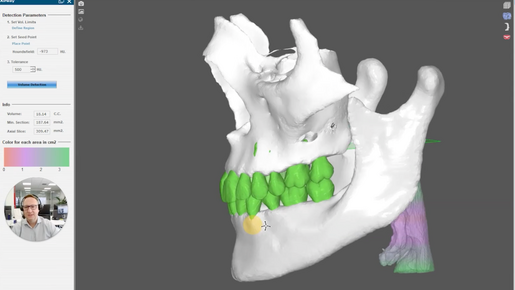In the image above, green refers to analog while orange is digital. Red shows all types of restorations that can be feldspathic.

By Christian Coachman
⋅ 3 min read
⋅ Updated Jul, 2025
There’s still a surprising amount of confusion around ceramic materials – and not just among younger dentists. Professionals casually mix up concepts like feldspathic, reinforced glass ceramics, layered, and monolithic.
It’s common to assume that feldspathic equals layered and monolithic equals digital. But that’s not necessarily true. You can have a feldspathic CAD/CAM restoration and you can have a handmade monolithic restoration. Understanding the nuance behind these terms matters because it changes how we think, plan, execute and ultimately communicate.
In this article, I want to walk you through the questions we should be asking and the elements that actually move the needle when it comes to esthetics, function and restorative communication.
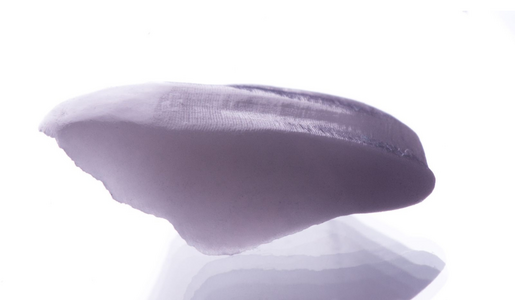
The questions we should be asking about ceramics
Today, almost all materials come in blocks that can be milled. That means we can fabricate any ceramic in a CAD/CAM monolithic way. We can also cut back the milled structure and combine milled with a little layering. Both are valid and both can be beautiful.
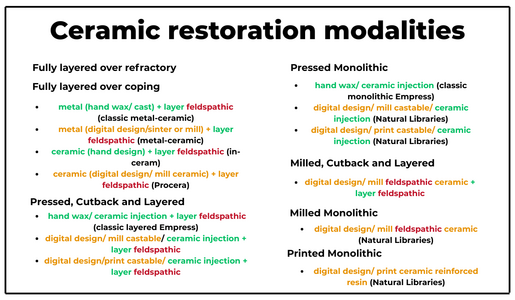
Another layer of complexity is the milled monolithic monochromatic versus milled multi chromatic blocks.
So when someone asks: “Do you prefer milled or feldspathic?”, they’re not really asking the right question. The better questions are:
Do you prefer monolithic or layered?
Feldspathic monolithic or feldspathic layered?
Layered reinforced glass ceramics vs. monolithic reinforced glass ceramics?
Feldspathic or reinforced glass ceramics?
Clarity here helps us better define our workflows, communicate with the lab and set more realistic expectations for outcomes.
Can any material look great?
Let’s be honest: any material can look really good with the right skills, experience and protocols. What truly matters is your ability to achieve:
Dento-facial harmony
Proper value selection
Morphology and texture that fits the individual
Natural shapes
Gingival integration
In fact, when it comes to shape, I often prefer our monolithic natural shapes over many handmade layered ceramics. Shape is usually more relevant than color.
And when we do talk about color, the biggest challenge is getting the value right. That’s independent of technique; both layered and monolithic can succeed or fail here, depending on execution.
If all of this is done perfectly, and you’re working with one of the best ceramists in the world on their best day, then yes, a layered feldspathic restoration might look a little more optically refined under high magnification.
But how often are we working in those conditions?
The bigger factor: gingival morphology
There’s something that influences esthetic perception more than layering ever could: the way your restoration meets the gingiva.
That initial 1–2 mm of the emergence profile is critical. It can shape the gingival contour, create a natural relationship with the papillae, delicately close the back triangle without too much pressure, and create a seamless transition between white and pink esthetics that makes a big difference from a social distance.
Although this is so important, it is rarely discussed and is hard to teach. And in most cases, it can only be mastered when a skilled professional is working chairside, adjusting the restoration directly in the mouth.
That’s the true gold standard: having a top professional working chairside with you and allowing them to work on these details in the mouth. Analog or digital, this millimetric harmony can only be tested, evaluated, modified and improved when trying in the restorations in the mouth.
The reality of digital: micro texture still needs a human touch
Let’s talk about one limitation of digital workflows: micro texture.
Digital natural libraries, milling and printing machines are the best for natural shapes but even the best libraries can’t fully replicate the subtle micro texture of natural enamel. For this micro texture, we still rely on the human hand.
While we can use digital to get incredible shapes and esthetic frameworks, for the finish that takes it to the next level, we still need manual intervention.
Comparing Digital Monolithic with Handmade Layered
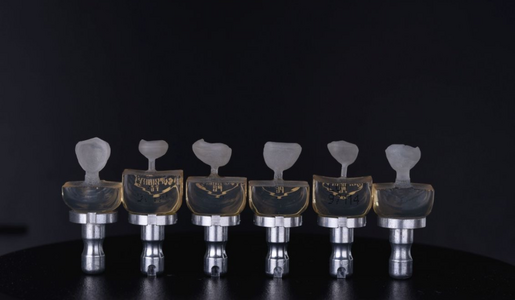
Digital monolithic (above) and handlayered (below).
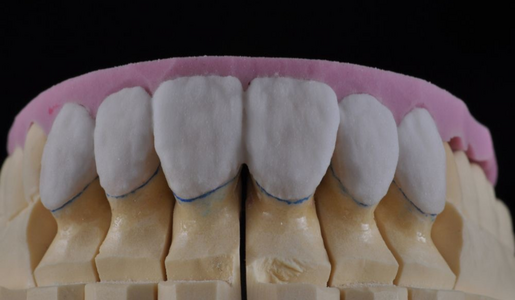
Here is the way I see it when comparing digital monolithic CAD/CAM with handmade layered:
- Milled monolithic is already better and more consistent when it comes to achieving facial harmony, smile design, arrangement and natural morphology. Digital monolithic are the only ones that allow us to leverage natural libraries.
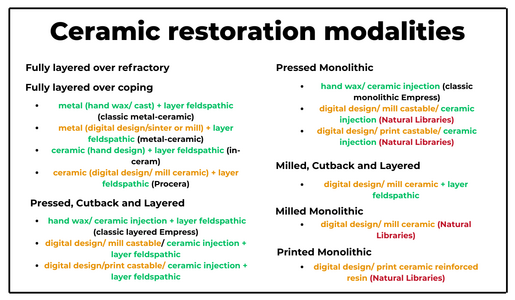
The image above shows all modalities that can take advantage of natural libraries.
2. When it comes to optical properties, value is the most important and digital or handmade are equally challenging to match the value. It’s all about the know how and experience with the system of choice.
3. When it comes to the highest level of optical properties (which in my opinion are less important for the majority of cases) handmade is still a touch better, if using a top 100 ceramist on an inspired day.
4. When it comes to micro texture, fully digital is still not quite there. This means that regardless of digital or handmade, we still need the human touch to take it to the next level.
5. When it comes to fit, interproximal and bite adjustment, digital (with the right know how) is more consistent and less skill sensitive.
6. When it comes to copying the approved design (from a diagnostic design, mock up or provisional) into the final restoration, digital is much better than handmade.
7. When it comes to longevity, digital/monolithic has the tendency to be better than handmade since there is no material interface, better physical properties, more consistency in the manufacturing, less porosity, and more consistency in the fit. It is also easier to identify issues and fix them, and it is less skill sensitive.
In the end, the material you choose – whether reinforced glass ceramics or feldspathic, monolithic or layered – is only one part of the equation. What matters more is how you use it: the thought behind your design, your mastery of shape and value, your understanding of gingival integration, and your willingness to combine technology with the human touch.
From planning to precision: partnering with the DSD Lab
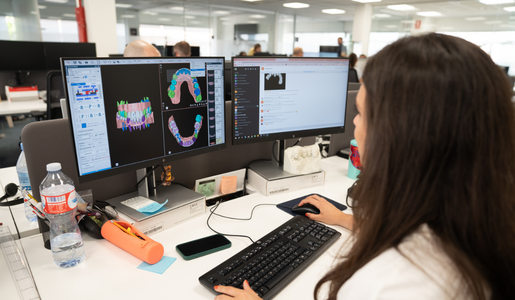
If you're looking for a partner that understands this full picture, from comprehensive planning to exceptional execution, explore how the DSD Planning Center and Lab can support you.
Our team blends decades of experience with cutting-edge technology to help DSD-certified dentists deliver predictable and outstanding results.
Follow us on Instagram, Facebook, and LinkedIn to stay updated on the latest DSD news.



